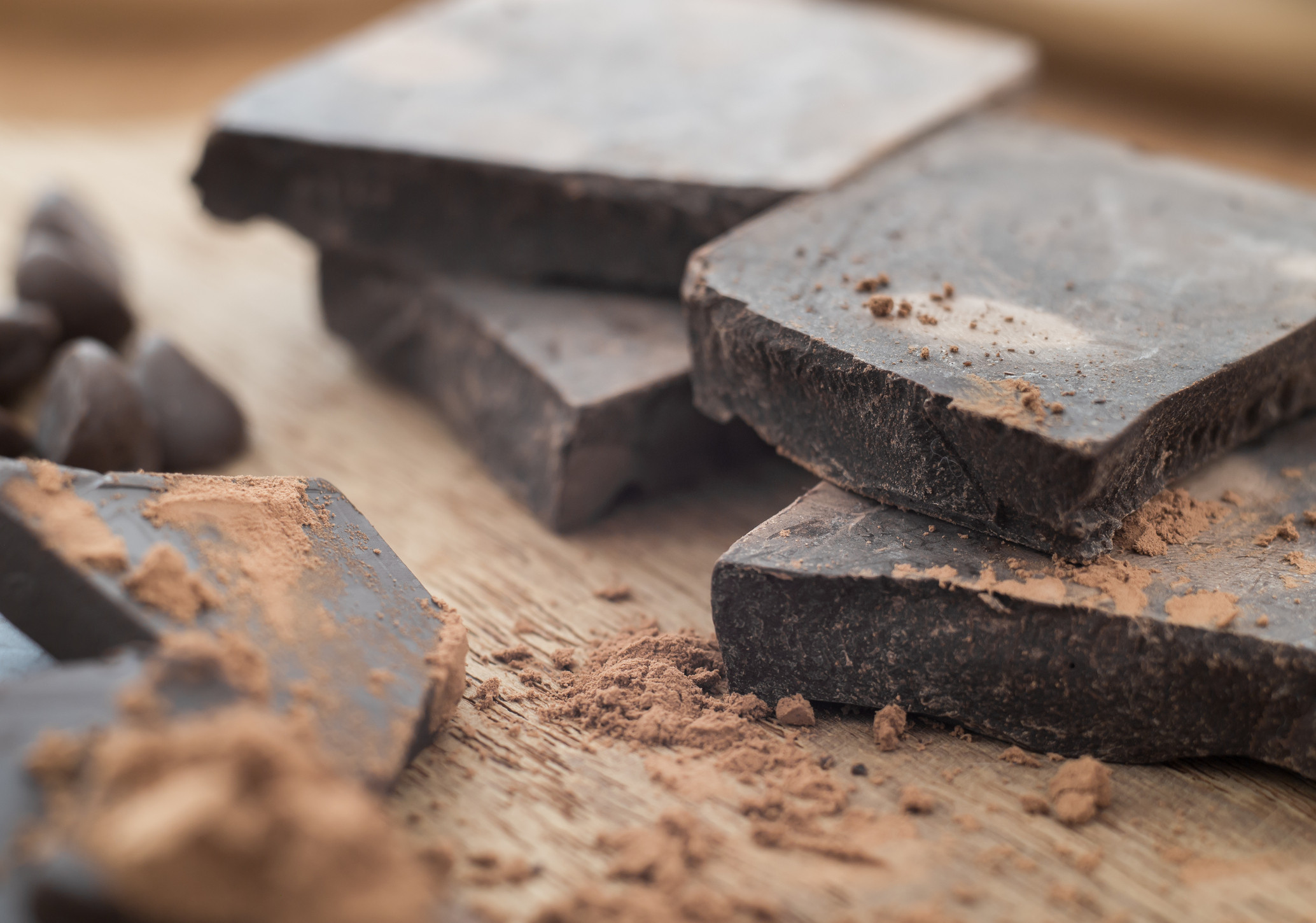Harvard Health Blog
Can dark chocolate improve vision?

It was very fitting: I had just finished a square of 86% cacao dark chocolate when I got the email about yet another study suggesting health benefits of dark chocolate. In addition, I had just returned from vacation in Guatemala, the land of the Maya. It was the Maya who discovered the usefulness of the seeds of the cacao plant in 2,000 BC, seeds they roasted and ground into a drink fit for kings.
Health benefits of dark chocolate
Many studies have shown that chocolate has health benefits. An analysis of several studies that included data on over 500,000 participants found that those who regularly eat dark chocolate (two to three 30-gram servings per week) had a lower risk of developing diabetes, heart disease, and strokes. In another study of over 2,000 participants, the more chocolate they reported eating (up to twice per week), the less coronary artery plaque they had. And the studies go on and on… We have a pretty good idea that chocolate is good for your cardiovascular health.
This most recent study looked at the effect of milk vs. dark chocolate on three types of visual perception: visual acuity, large and small letter contrast sensitivity. The researchers found that there were improvements in all measures two hours after ingestion of a 47-gram dark chocolate bar (72% cacao).
What helps your heart may also help your vision
There may be a common pathway between the visual perception improvements and the cardiovascular protective effect, namely the effect of plant molecules called polyphenols. The polyphenols found in cocoa are called flavanols. These have an especially positive effect on our blood vessels, by healing damage to the lining, relaxing the muscle, and improving blood flow. Studies have shown that cocoa flavanols also improve blood sugar metabolism and reduce the risk of developing diabetes, as well as reduce risk for heart and vascular disease in patients who have diabetes. The authors of the visual study hypothesize that cocoa flavanols enhance availability of oxygen and nutrients to the blood vessels of the eye and brain. The retina in particular, they point out, is very highly vascularized and may be the area of interest in these study findings.
Should you make dark chocolate part of your health routine?
Given decades of research consistently showing a positive health effect of dark chocolate, we can feel good about recommending regular consumption. But note: the best and most consistent results are from dark chocolate, which can contain between 50% and 90% cocoa flavanols. Milk chocolate can contain as little as 10% up to maybe 50%, and tends to be made with more fat.
Nibble on two squares of dark chocolate (the darker the better) daily to enjoy all of these benefits. Nibble it slowly; it's very filling. Not used to the slightly bitter taste yet? Either give it time, or try these easy recipes:
How to make dark chocolate dessert bark*
You can sprinkle on dried berries, nuts, or both for added benefits:
- 1 bag quality dark chocolate chips, like Ghirardelli (which is about 60% cacao).
- Dried cranberries, cherries, or other fruit
- Crushed pistachios or almonds (toasted or plain)
Pour the chocolate chips into a glass microwave-safe bowl.
Add one tablespoon oil that doesn't have flavor, like coconut oil. Any will do, really. Stir it into the chips.
Place bowl in microwave and heat on high for no more than 30 seconds at a time, stirring after each time, until chocolate is melted.
Pour onto two cookie sheets that have been fitted with a silicone baking mat or nonstick parchment paper, dividing evenly. Spread the chocolate out so that it's about 1/4 to 1/2 a centimeter thick.
Then go crazy. Sprinkle whatever you want on there: dried fruit, crushed nuts, maybe a sprinkle of sea salt (if you're not watching your salt intake).
Bark will last a few days wrapped in plastic or wax paper.
How to make dark chocolate dipped strawberries*
(Berries are also rich in antioxidants.)
- 1 1/2 cups dark chocolate chips (we used Ghirardelli, which are 60% cacao)
- 1 teaspoon coconut oil
- A package of large fresh strawberries, approximately 12
Wash and thoroughly dry the berries. (The chocolate sticks better when they're very dry.) Do not remove the caps.
Pour the chocolate pieces into a bowl and add the teaspoon of coconut oil (the oil is a solid until it's heated).
Place the bowl in the microwave and heat on high for about 45 seconds. Remove and stir. The only thing melted will be the oil. Microwave again for 30 seconds and stir. Repeat maybe twice more, until pieces are all basically melted. If there's only a few small chunks left, stir for a minute and see if they melt without any further microwaving. Chocolate burns very, very easily, and it tastes awful when it does.
Place a piece of parchment or wax paper on a baking sheet. Gently grasp a berry by the green cap, and lower into the chocolate "bath." Use a spoon to push chocolate up each berry until they are coated. Let excess chocolate drip off.
Place each berry onto the paper-covered baking sheet. Repeat for all the berries.
Place the baking sheet of berries in the fridge or in another cool place. Let the chocolate harden into a shell; this may take only a few minutes.
These will last about a day covered in the refrigerator.
*Note that versions of the dark chocolate bark and dark chocolate dipped strawberries have been published on my own personal blog.
Selected references
Harvard T.H. Chan School of Public Health Nutrition Source: Dark Chocolate
Cardiovascular benefits of dark chocolate?Current Treatment Options in Cardiovascular Medicine, December 2015.
Effects of milk vs dark chocolate consumption on visual acuity and contrast sensitivity within 2 hours: A randomized clinical trial. JAMA Ophthalmology, April 2018.
Use of dark chocolate for diabetic patients: a review of the literature and current evidence.Journal of Community Hospital Internal Medicine Perspectives, September 2017.
About the Author

Monique Tello, MD, MPH, Contributor
Disclaimer:
As a service to our readers, Harvard Health Publishing provides access to our library of archived content. Please note the date of last review or update on all articles.
No content on this site, regardless of date, should ever be used as a substitute for direct medical advice from your doctor or other qualified clinician.















